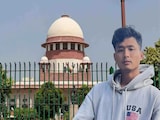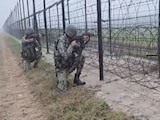Energy efficiency of defence systems and field formations can help reduce the number of troops that are required to support the soldiers serving on the frontline, said Vice Army Chief Lt Gen CP Mohanty on Friday.
"It is imperative that all future force requirements and new systems being inducted in the Indian Army are evaluated for their energy efficiency," he said at a webinar organised by think tank CENJOWS.
The Army needs to aim for energy efficiency through renewable sources, replacing its legacy transport fleet, advance its thermal and power military technologies, and explore wireless transmission of energy at forward areas, Mohanty noted.
He said energy efficiency can act as a force multiplier.
"This (energy efficiency) will also have a critical impact on making us resource surplus by reducing our long-term energy costs and thus enhancing our fiscal envelope for modernisations and capability enhancement," he noted.
The Army must also look at developing and diffusion of modelling, simulation and other analytical wargaming tools, he said.
This should be done to reduce dependence on energy heavy firing practices, mass movement, war manoeuvre and joint exercises with troops, he added.
(Except for the headline, this story has not been edited by NDTV staff and is published from a syndicated feed.)















